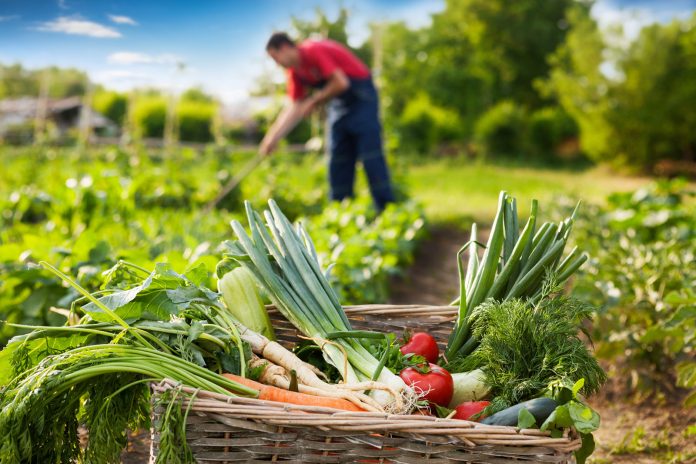In case you haven’t heard, the benefits of gardening are huge, not only for your personal health and well-being but from an environmental standpoint as well.
Because I personally love gardening for growing my food, I wanted to share the top sustainability benefits of gardening and growing your own food instead of buying it, in case you were considering doing this yourself (spoiler: you should!)
How is Gardening and Growing Your Food So Sustainable?
You Avoid the Huge Fossil Fuel Emissions From Transporting Food
We’ll start with the most obvious: If you’re gardening for food production, you’re significantly reducing your food miles, or the distance your food has to be transported between its source and where you buy it (Hawthorne Valley Farmscape Program).
It’s definitely a clear winner to have your food come from your own garden versus shipping it thousands of miles, which emits a huge source of carbon dioxide emissions. In addition to the thousands of gallons of fuel burned, produce also needs to be refrigerated for weeks during transport as well, which also adds to the overall carbon emissions.
If there are certain foods you have trouble growing, you can still greatly reduce your food miles by shopping at your local farmers markets, which is definitely the next best thing.
Traditional Harvesting Methods are Also Large Polluters
Large-scale farming uses massive amounts of fossil fuels and chemicals that can be totally avoided when you have your own fruit and vegetable garden.
For example, large scale farms often use heavy machinery like tractors and sprayers running on gasoline or diesel, as well as use energy-intensive synthetic fertilizers and pesticides that are more harmful to the planet compared to sustainable methods (FoodPrint).
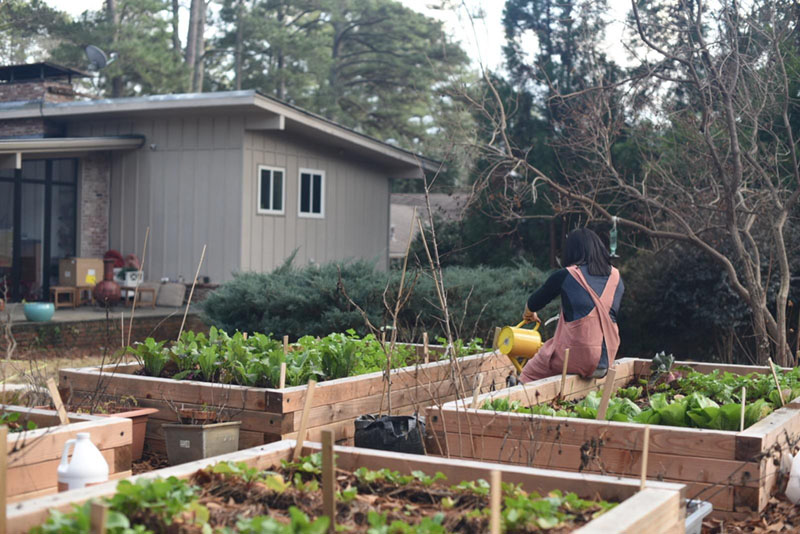

When you use your own compost for fertilizers and your own energy for weeding and harvesting, you’re not contributing to the added chemicals or the burning of fossil fuels. When you hand-weed, you can also add your weeds to your compost to use as a natural and safe (also free!) fertilizer.
If you’re shopping at your local farmers market and are curious about their methods, the farmers are usually there on site and can tell you what farming methods they’re using. I’ve found many local farmers really strive to use sustainable farming practices in comparison to large scale farming.
No Packaging Needed When You Grow Your Food
This may also be an obvious one, but you might not consider the carbon footprint when you only buy packaged, pre-wrapped produce. The Climate Collaborative reports that for some products, the packaging actually has an even bigger impact on climate change than the fuel used for shipping it (yikes!).
Not only does it take fossil fuels to create the packaging, but most often the plastic wrapping that your cucumbers or tomatoes are wrapped in aren’t recyclable, and will continue to contribute to more plastic ending up in landfills.
If you have to buy produce at the store, which we all do at times, you can look for foods that don’t come in plastic wrapping, as well as reach out to your favorite grocery stores to sell foods with less packaging when possible. I also use and recommend reusable produce bags to avoid needing to use the single-use plastic produce bags.
Tips to Make Your Garden More Environmentally-Friendly
Gardening and growing your own produce is definitely a more sustainable option overall, but did you know there are ways to ensure you’re doing the most to protect the environment? Here are a few ways to do this:
Use Natural, Safe Gardening Chemicals
According to Sustainable Gardening Australia, by opting for organic or natural fertilizers and pesticides you can protect local waterways and reduce harm to local wildlife. Additionally, artificial chemicals and fertilizers require more energy during their production compared to natural fertilizers like your own compost and worm castings.
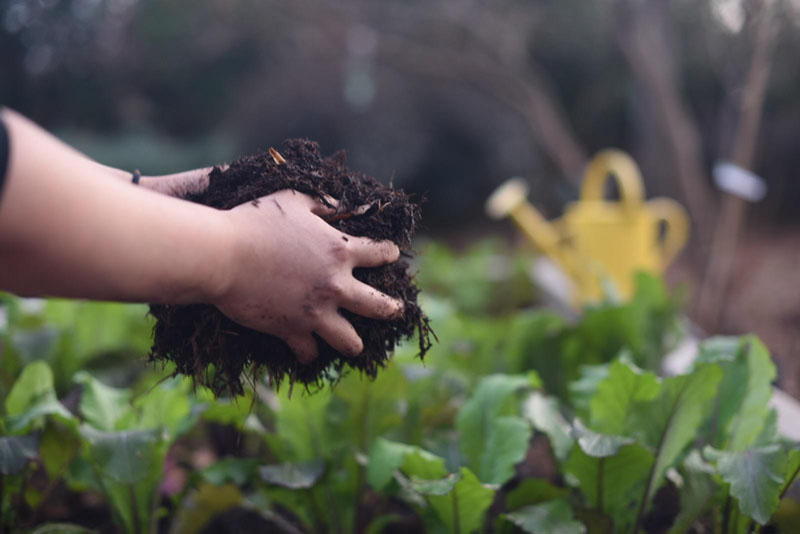

I’ve been using organic gardening methods for years now and find my food production is perfectly adequate and probably not any less than if I used synthetic methods.
Reduce Water Usage
It can be easy to overdo it when watering your garden, and I find myself regularly Googling “How much should I water?” and other similar questions, especially after moving to dry Colorado.
I found that along with timing your watering right (only watering in the early morning to avoid evaporation), you can also invest in water-saving systems like rain barrels and drip irrigation systems to reduce your water usage.
Sustainable watering methods are definitely something to consider for your garden, with the EPA reporting “As much as 50 percent of the water used outdoors is lost due to wind, evaporation, and runoff caused by inefficient irrigation methods, [and] a household with an automatic landscape irrigation system that isn’t properly maintained can waste up to 25,000 gallons of water annually.”
When you’re thinking about your garden’s landscape, as opposed to your food garden, using native plants that don’t require constant watering is a great way to cut back on water usage as well. The EPA has a helpful guide to help you see what plants will work best for your geographic zone here.
Compost Your Food and Yard Waste
I briefly mentioned above using your yard waste for composting as a great free fertilizer. Not only will you save money, but composting any yard waste or food scraps is a great sustainable measure to avoid plant waste from going into the landfill and producing harmful methane gas.
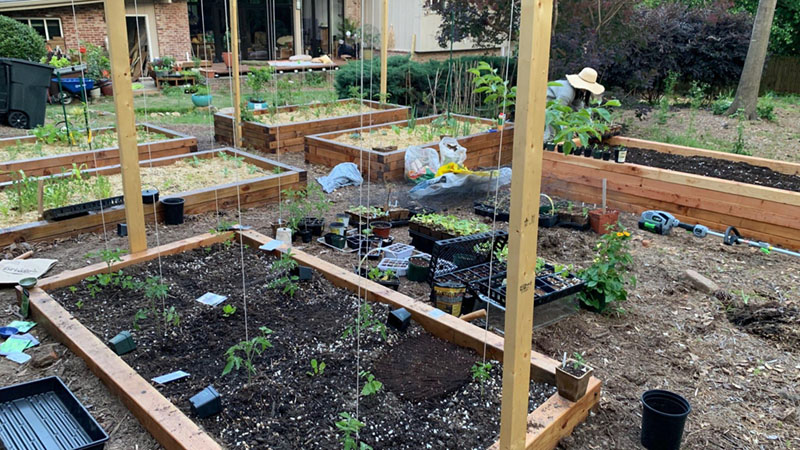

It’s such a rewarding feeling to give back to the earth through the natural cycles of decomposition by composting scraps that in turn feed and nourish your garden plants again and again.
Composting is also super easy to do whether you’re in an apartment or have more space. You can check out the different options with this handy composting guide from NPR.
What If You Live in an Apartment and Don’t Have Space?
When I lived in my second floor apartment in Atlanta, I was really fortunate to have a patio to do container gardening. I know that not all apartment-dwellers are this fortunate, but not to worry, you still have options!
If you have a sunny spot, even on a main level or rooftop that is available for your own use, you can start with container gardens for a number of plants. You can also do an indoor herb garden with containers pretty easily. Need more ideas? Here is a great quick video from my favorite gardening channel, Epic Gardening, on more apartment gardening options.
Another option for those with limited space is to look into renting a plot at your local community garden. You can do a quick search on your Google Maps to see what’s closest to you. Keep in mind you’ll want a location that you will be able to commit to going to water as needed especially during the summer months. If it’s out of the way, you may find it’s more of a hassle to get to regularly.
Wrapping Up
In case I haven’t sold you on the environmental benefits and sustainability of gardening, I also want to add my personal favorite benefit of growing your own food: It tastes SO much better!
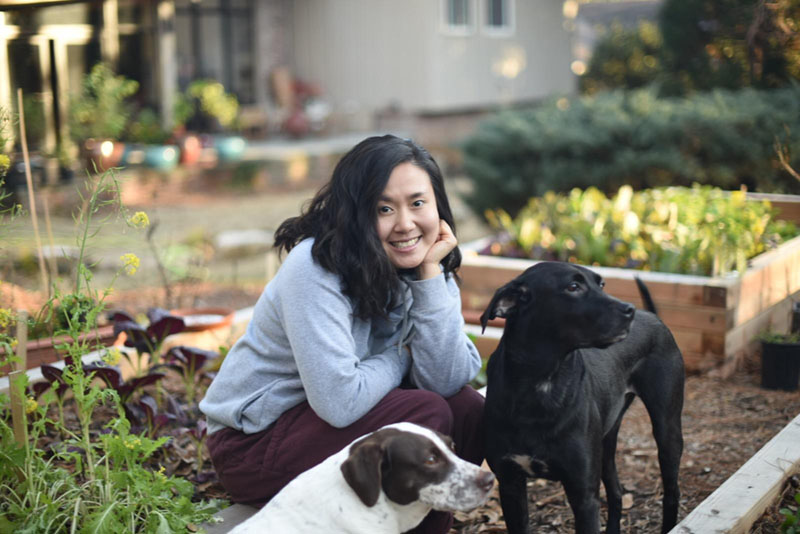

After I had my first juicy homegrown tomato, I realized why so many people don’t like typical store-bought tomatoes that are gritty and flavorless. When you buy a fruit or vegetable that’s not in season that has been shipped across the world over weeks’ time, it just doesn’t taste great.
When you nurture your own produce and grow it when it’s in season, I can promise you that the extra work it takes for fresh food is well worth the effort. You may never want to go back to out of season produce again! And while this article is just a quick run-down of the sustainability benefits of gardening, we’ll be sharing other gardening resources soon so you’ll have more helpful gardening tips to help you get started.
If you have any gardening questions or any favorite gardening resources, let us know in the comments below. Happy planting!

